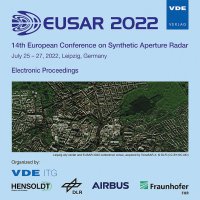On the Use of Tomographic derived Reflectivity Profiles for Pol-In-SAR Forest Height Inversion
Konferenz: EUSAR 2022 - 14th European Conference on Synthetic Aperture Radar
25.07.2022 - 27.07.2022 in Leipzig, Germany
Tagungsband: EUSAR 2022
Seiten: 4Sprache: EnglischTyp: PDF
Autoren:
Guliaev, Roman; Pardini, Matteo; Papathanassiou, Konstantinos P. (German Aerospace Center (DLR), Microwave and Radar Institute (HR), Wessling, Germany))
Inhalt:
Model based Pol-InSAR data inversion allows the estimation of forest height using, for example, the RVoG model from single- and multi-baseline Pol-InSAR acquisitions. This conventional approach relies on the approximation of a volumetric reflectivity described by a single parameter, e.g. a constant attenuation coefficient, and assumes in the case of a single baseline that one polarization has almost zero ground response. However, the experimental data imply that for many forest conditions the ground response can be significant in all polarizations, especially at lower frequency bands, e.g. L- and P-band. In addition, the parameterization of RVoG reflectivity by an exponential function might be insufficient. In this paper we propose the parameterization of the forest reflectivity using tomographic reconstructed reflectivity profiles. The separation of ground and volume component in the tomographic data is performed using the (sum of) Kronecker products (SKP) decomposition. The ground contribution is then modeled by a Dirac δ function and the ground to volume ratio is addressed as an unknown parameter together with the forest height. First experimental results demonstrate the improvement in the accuracy and consistency of forest height estimation using the volume separated profiles.


